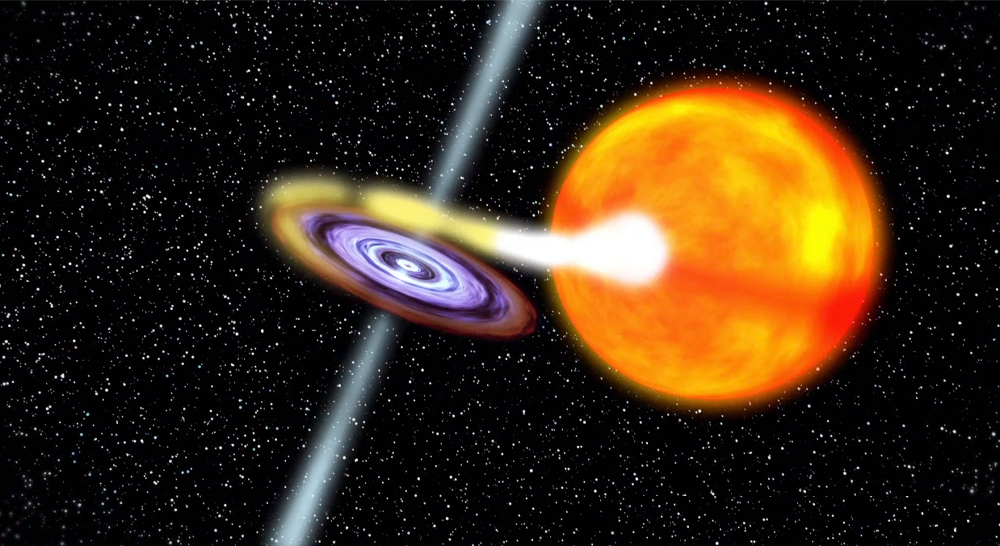
 Credit: NASA's Goddard Space Flight Center
Credit: NASA's Goddard Space Flight Center
Another Hole in the Galaxy
How many black holes are there in the Milky Way? We know of one supermassive one, and about two dozen of lesser mass. But no one knows how many are lurking out there, waiting to be discovered (or waiting to munch on any unfortunate star that passes too close). Black holes are most readily found when feasting, since material that accretes onto the black hole gets heated to incredible temperatures, providing a strong tell-tale X-ray glow. Black holes are also messy eaters, sometimes especially gorging themselves and releasing a huge burp of high-energy X-rays. NASA's Swift satellite found one such outburst in X-rays from a previously unknown object now called Swift J1745-26. This object is now believed to be a black hole orbiting a normal stellar companion. The black hole accretes material off the companion, as indicated in the artist's rendering above. An instability in the accretion rate caused a huge deluge of matter from the accretion disk around the black hole to fall through the black hole's event horizon, effectively leaving our Universe for good and producing a farewell bright outburst of X-rays, a so-called X-ray nova. This outburst was seen by Swift on September 18, and is now being followed up with other ground and space-based observatories.
Published: October 8, 2012
<
HEA Dictionary ● Archive
● Search HEAPOW
● Other Languages
● HEAPOW on Facebook
● Download all Images
● Education ● HEAD
>

Each week the HEASARC
brings you new, exciting and beautiful images from X-ray and Gamma ray
astronomy. Check back each week and be sure to check out the HEAPOW archive!
Page Author: Dr. Michael F. Corcoran
Last modified Monday, 26-Feb-2024 17:22:02 EST


